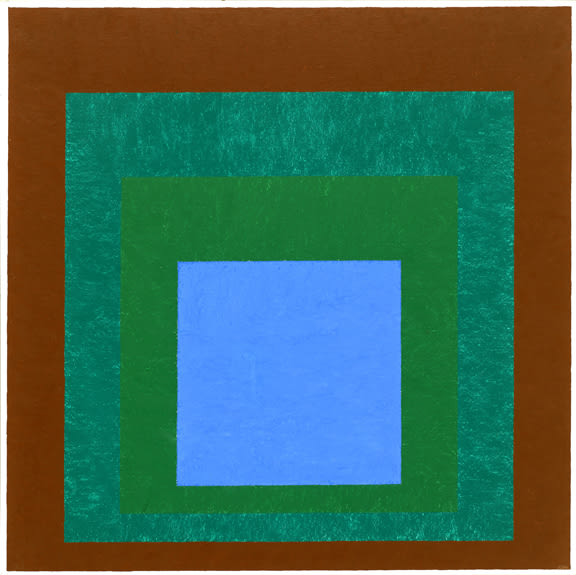Philip Guston Canadian-American, 1913-1980
-
-
Selected Public Collections
The Museum of Modern Art (MoMA), New York
The Metropolitan Museum of Art, New York
Solomon R. Guggenheim Museum, New York
Whitney Museum of American Art, New York
National Gallery of Art, Washington DC
Hirshhorn Museum and Sculpture Garden, Washington DC
Los Angeles County Museum of Art (LACMA)
San Francisco Museum of Modern Art (SFMOMA)
Art Institute of Chicago, Chicago, Illinois
Philadelphia Museum of Art, Philadelphia, Pennsylvania
Museum of Fine Arts, Boston, Massachusetts
Museum of Fine Arts, Houston, Texas
Tate, London, United Kingdom
Centre Pompidou, Paris, France
Stedelijk Museum, Amsterdam, Netherlands
Museum Ludwig, Cologne, Germany
The British Museum, London, United Kingdom -
Publication
-
Exhibitions
-

Contemporary & Modern Masters
Mar 6 – Apr 24, 2025View More -

Works in Black and White
Sep 14 – Oct 13, 2023Berggruen Gallery is proud to present Works in Black & White, a group exhibition that delves into the world of black and white as the primary, and often sole, colors. This curated collection explores the nuances of these two fundamental tones, reflecting on the various ways artists employ simplicity and complexity within this timeless palette. From bold abstractions to intricate minimalism, the exhibition reveals the artists' diverse abilities to convey emotion and provoke contemplation within the grayscale spectrum.View More
Works in Black & White will be on display from September 14 — October 13, 2023, featured on the top level of Berggruen Gallery.
Exhibiting Artists:
Robert Bechtle | Richard Diebenkorn | Lucian Freud | Michael Gregory | Philip Guston | Mona Hatoum | Al Held | Sarah Hotchkiss | William Kentridge | Anselm Kiefer | Matt Kleberg | Des Lawrence | Julian Lethbridge | Brice Marden | Sam Messenger | Martin Puryear | Linda Ridgway | Iran Do Espírito Santo | Richard Serra | Joel Shapiro | Kiki Smith | Jonas Wood -

Looking Back: 45 Years
Oct 8 – Dec 19, 2015View More -
Summer Highlights
Jul 10 – Aug 10, 2014View More -

Four Decades
Drawings and Works on Paper May 1 – Jun 28, 2014John Berggruen Gallery is pleased to present Four Decades: Drawings and Works on Paper, a group exhibition that invites a new perspective on a history of drawing and painting by integrating works from both well known and emerging artists. This exhibition will open on Thursday, May 1st, and will run through Saturday, June 28th. An opening reception will be held on May 1st, from 5:30-7:30 pm.View More
From Willem de Kooning’s playful oil jitney to Sam Messenger’s meticulously rendered “veils”, Four Decades: Drawings and Works on Paper jumps around the various inspirations of the artists included to present a group of works in a fresh context. This exhibition incorporates the work of monumental and historical artists such as Chuck Close, Willem de Kooning, Mark di Suvero, Roy Lichtenstein, and Robert Longo with dynamic new work from emerging artists such as Diana Al-Hadid and William Cordova, both New York City artists who have received major exhibitions in 2013.
Mid career artists such as Peter Doig, Spencer Finch and Julie Mehretu balance out this topographical collection of works; their inclusion points to the range of various surfaces and textures an artist can explore within the expanse of their career. Mehretu’s careful drawings and di Suvero’s ink tinkerings contrast in each artist’s interpretation of an architectural perspectivism. Roxy Paine’s light hearted drawings work to inspire simplicity of style: his drawing Study for Line, 2014 is a study for his upcoming commission for the new Central Subway Yerba Buena/Moscone Station at 4th and Clementina streets in San Francisco. Ellsworth Kelly’s perennially loved flower drawings round out the show to underscore for the viewer a focus and appreciation for the artist’s touch inherent in a single line. Every work in Four Decades: Drawings and Works on Paper is inflected but not weighed down by each different artist’s past and procedures.
For further information and photographs, please contact the gallery at 415.781.4629 or info@berggruen.com. -
Selected Works
May 22 – Jun 22, 2013View More -
Selected Works
Jul 12 – Aug 25, 2012View More
-
-
Art Fairs
-

Dallas Art Fair
Dallas, Texas Apr 11 – 14, 2019Berggruen Gallery is pleased to announce its participation in Dallas Art Fair 2019. Please visit us at Booth A4 at Fashion Industry Gallery, Dallas. A...View More -

TEFAF
New York City, New York May 4 – 8, 2018Berggruen Gallery is pleased to announce our participation in TEFAF New York Spring at the Park Avenue Armory. The fair is open to the public...View More -

ADAA The Art Show
New York City, New York Mar 2 – 6, 2011Please visit us at booth C13, The Art Show in the Park Avenue Armory at 67th Street in New York. Admission is $20 per day...View More
-
-
Inquire
Send me more information on Philip Guston





